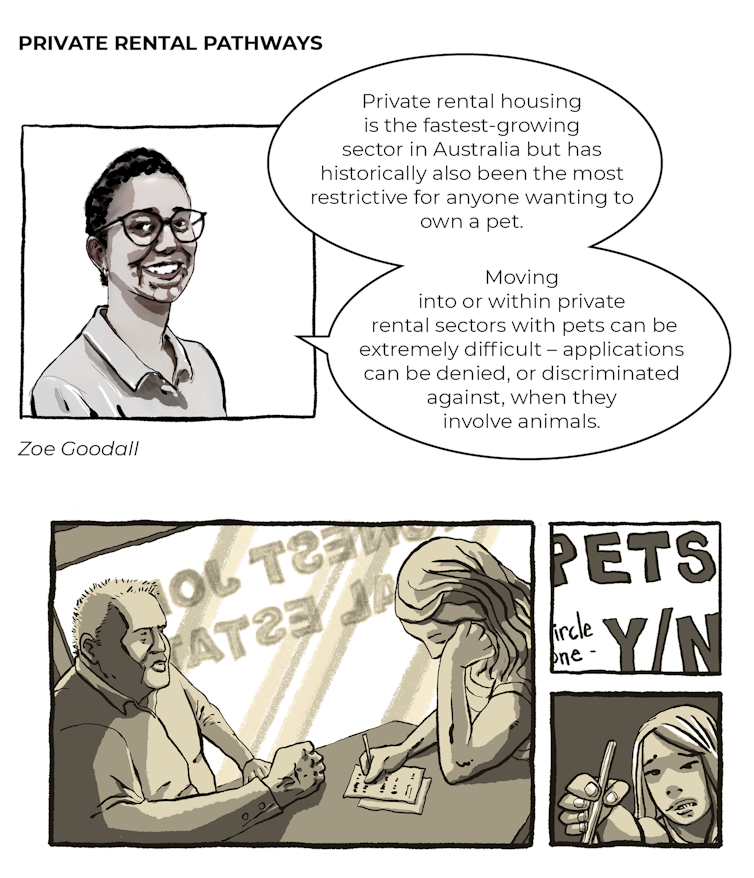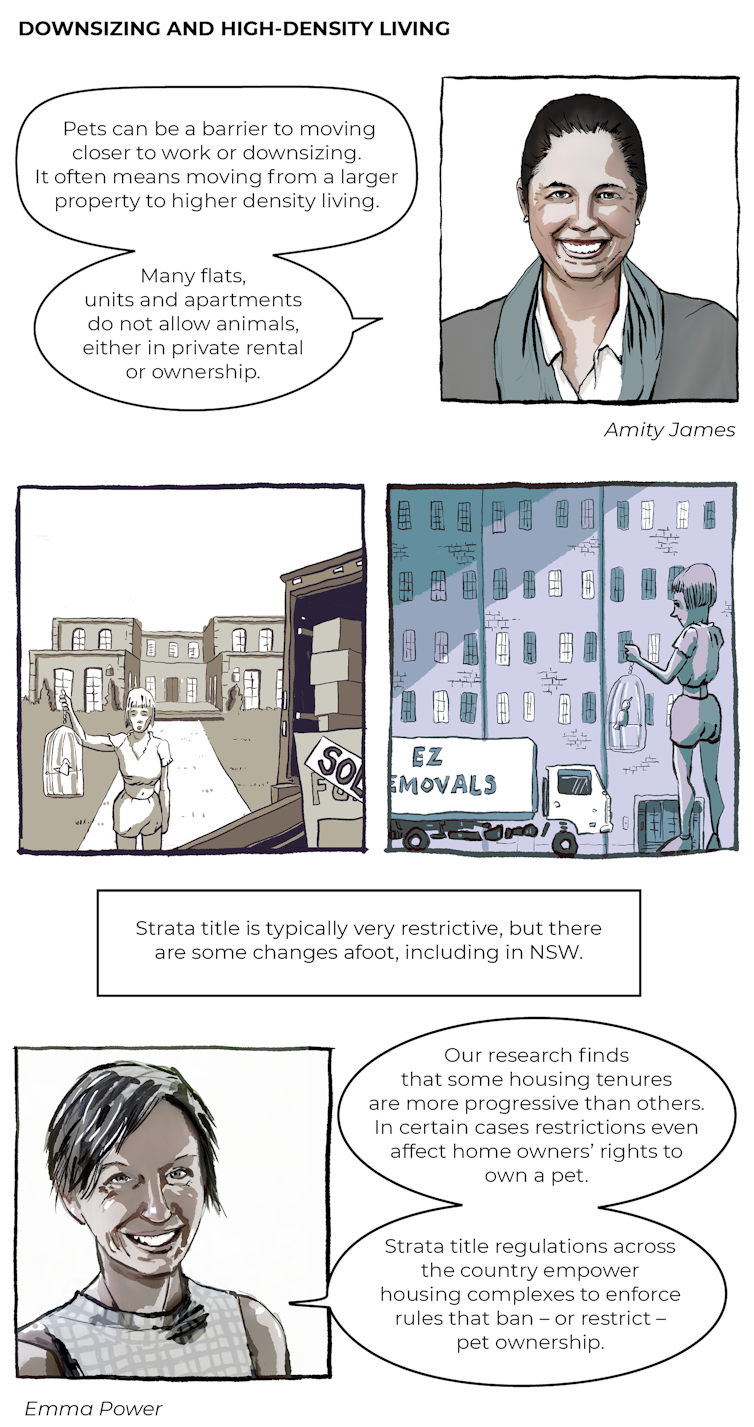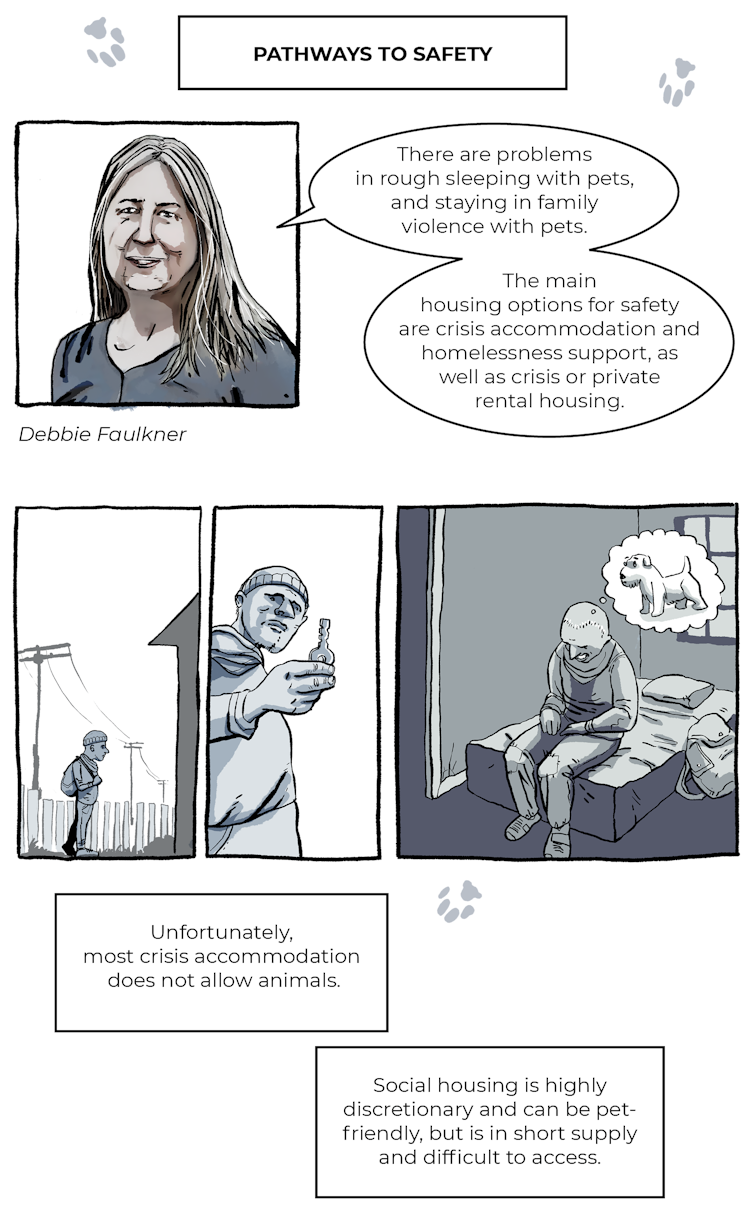Can I have a pet and be housed, too? It all depends...
The Conversation • 24/02/2021
This article is republished from The Conversation under a Creative Commons license. Read the original article. This is a guest entry and does not necessarily reflect the views of the Tenants' Union of NSW.
Authors: Wendy Stone, Swinburne University of Technology; Amity James, Curtin University; Caitlin Buckle, University of Sydney; Darren C Fisher, Swinburne University of Technology; Debbie Faulkner, University of South Australia; Emma Power, Western Sydney University; Selina Tually, University of South Australia, and Zoe Goodall, Swinburne University of Technology
Barriers to housing for people with pets around Australia are the focus of newly released national research by an interdisciplinary team. Why? Because laws are changing nationally but are highly inconsistent. A systematic national approach is needed to reduce the numbers of people who have to give up their pets to secure housing – especially as we return to post-COVID “normal”.
Six housing experts spanning five Australian universities undertook the study of animal-inclusive housing and options for reform, the first of its kind internationally. It assesses state and territory housing and legislative reforms in the private rental sector, social housing, homelessness services, strata title, aged care and caravan parks. Here they explain what they found.






Wendy Stone, Professor of Housing & Social Policy, Centre for Urban Transitions, Swinburne University of Technology; Amity James, Senior Lecturer, School of Accounting, Economics and Finance, Curtin University; Caitlin Buckle, Research Associate in Housing Studies, University of Sydney; Darren C Fisher, Lecturer- Animation, Swinburne University of Technology; Debbie Faulkner, Senior Research Fellow, UniSA Business, University of South Australia; Emma Power, Senior Research Fellow, Geography and Urban Studies, Western Sydney University; Selina Tually, Senior Research Fellow, The Australian Alliance for Social Enterprise, University of South Australia, and Zoe Goodall, Research Associate, Centre for Urban Transitions, Swinburne University of Technology



